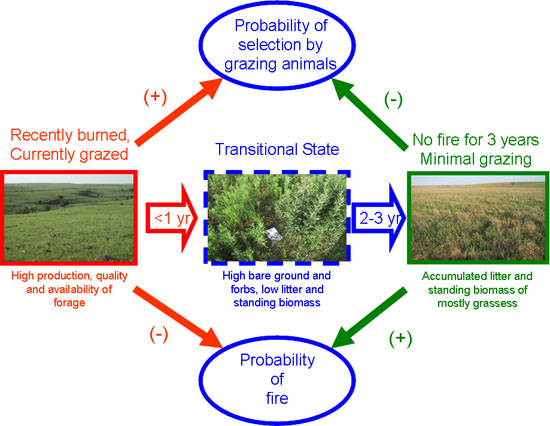What is Patch Burning?
Patch burning (patch-burn grazing) involves the combined use of fire and grazing for ecological or agricultural goals within landscapes or pastures. The target area or pasture is subdivided using only needed burn lines (no cross fencing). Each year fire is used to burn a different portion of the pasture. Livestock can be added to the area at anytime. The grazers will be attracted to the burned area and spend most of their grazing time in that portion of the pasture. As fire moves around the pasture or landscape, grazing pressure will also change in synchrony. The focal area or patch will incurr heavy grazing creating a grazing lawn type structure. As grazing pressure is released, the plant community recovers and a shift mosaic is created.
Patch burning allows livestock to freely select the most recently burned part of a pasture. It has been found that livestock spend 75% of their time on these burned patches and, typically, evenly utilize all the palatable plants within the entire burned patch. This includes plants that are normally not considered desirable livestock forage. Then within 6-12 months another portion of the pasture can be burned. This will shift the focal grazing point to the new burn patch. After the heavy utilization (1 to 4 years post-burn depending on the chosen rotation) a transition state of bare ground, forbs, and small amounts of standing biomass and litter occurs. Within a couple of years post-burn, the patch receives very little grazing pressure which allows biomass and litter to accumulate (Figure 3). This rested patch is then ready to be burned and grazed again. This is all accomplished without fences. The total amount of hands on management is much less with this system than many other common grazing systems. For more information about patch burning go to the following link http://pods.dasnr.okstate.edu/docushare/dsweb/Get/Document-4677/E-998survey.pdf


